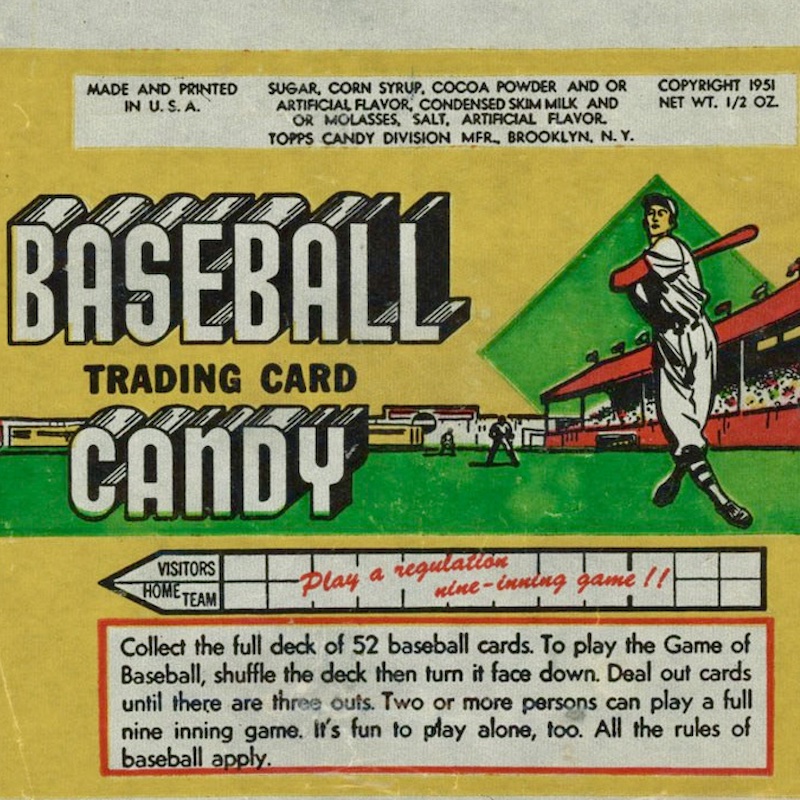
1951 Topps Connie Mack’s All-Stars Baseball Cards
Product Details
One of several Topps Baseball sets issued during their debut season, 1951 Topps Connie Mack's All-Stars Baseball is a small release with a die-cut design. The early cardboard series is also known as R414-2.
Led by cards for Babe Ruth and Lou Gehrig, the vintage set commands strong values.
1951 Topps Connie Mack's All-Stars Baseball Set Details
Named for the accomplished manager, 1951 Topps Connie Mack's All-Stars Baseball may only have 11 cards in the checklist, but there is certainly no filler. An homage to the former greats, including Connie Mack himself, it can easily be considered a Hall of Fame set since every subject is enshrined in Cooperstown.
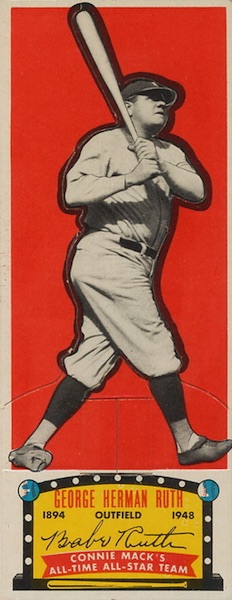
Measuring 2-1/16" by 5-1/4", the tall 1951 Topps Connie Mack's All-Stars Baseball cards have a distinct design. The large black-and-white image of each player is highlighted by a deep red background and a yellow-filled text box at the bottom that also acts as a stand. The player's full name and replica signature is listed along with basic info and the tagline "Connie Mack's All-Time All-Star Team."
The card backs are basic with a moderately-sized player bio in the center and an ad for the full series at the bottom along with instructions for the figure stand. While there are no card numbers, most collectors organize them by the player's last name.
What really makes the cards distinct is that almost the entire player image is die-cut. This design allows collectors to fold the die-cut portion out of the card to create a makeshift display piece.
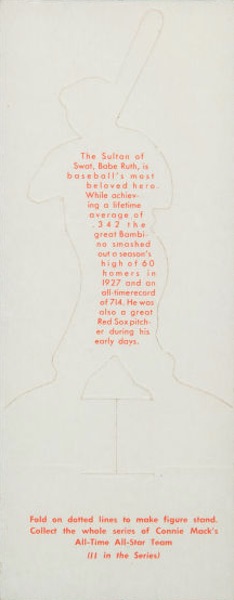
However, the die-cut design also means that many of the cards have suffered considerable wear at the hands of overzealous collectors. It is also not uncommon to find 1951 Topps Connie Mack's All-Stars Baseball cards that are altered, with the exterior portion of the die-cut completely removed with scissors. Coming as no surprise, this greatly decreases the value.
Because of the remnants found at the top and bottom of each card, it is believed that the release was originally printed as panels. The cards can be especially vulnerable at these points and the set also suffers from centering issues.
As values have increased, counterfeits have become more common. Although the easiest way to avoid most of the uncertainty is to purchase cards that have been graded or authenticated by a reputable company, there are few key things to be aware of when shopping for 1951 Topps Connie Mack's All-Stars Baseball.
The most obvious thing to verify is that the card is actually die-cut. Many fakes somehow overlook that step and it can be an easy way to rule out a counterfeit. Also, the card stock for fakes is rarely accurate so, if possible, it is good to familiarize yourself with a real card during the research process.
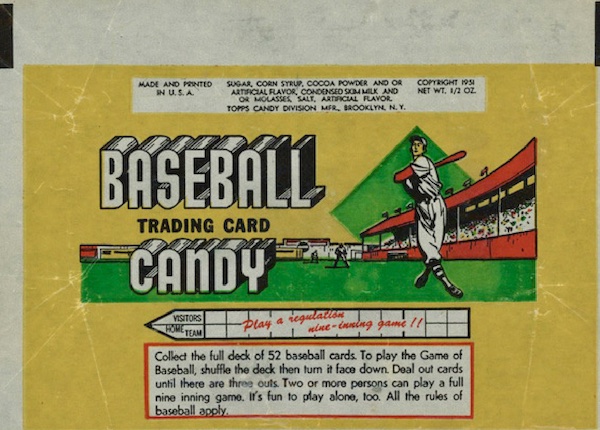
It is also important to note that there is another similar set from Topps that was issued the same year. Featuring nearly the same exact design, 1951 Topps Major League All-Stars Baseball also totals 11 cards, but the checklist is completely different as it includes active players of the time. These die-cut cards are considerably more difficult to find than the Connie Mack's.
Gallery
1951 Topps Connie Mack's All-Stars Baseball Cards Checklist Gallery
Shop for singles or check completed sales values using the eBay links.
Grover Alexander
Mickey Cochrane
Eddie Collins
Jimmy Collins
Lou Gehrig
Walter Johnson
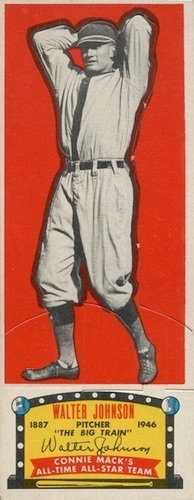
Connie Mack
Christy Mathewson
Babe Ruth
Tris Speaker
Honus Wagner
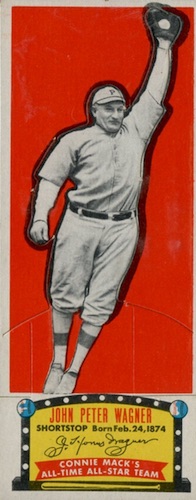
Set Checklist
1951 Topps Connie Mack's All-Stars Baseball Checklist
Base Set Checklist
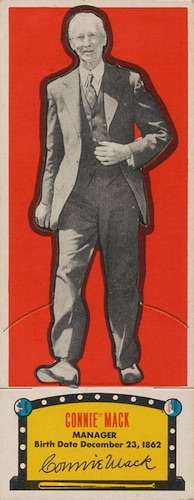
Mickey Cochrane - Philadelphia Athletics
Eddie Collins - Chicago White Sox
Jimmy Collins - Boston Beaneaters
Lou Gehrig - New York Yankees
Walter Johnson - Washington Senators
Christy Mathewson - New York Giants
Babe Ruth - New York Yankees
Tris Speaker - Cleveland Indians
Honus Wagner - Pittsburgh Pirates
 | Making purchases through affiliate links can earn the site a commission |







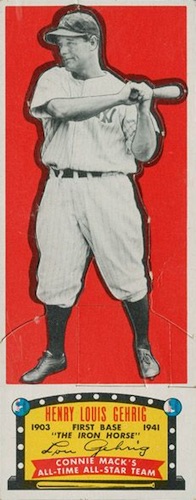


























Fred Taylor
As the wax pack does not refer to a price, I wonder what the retail price of the Connie Mack All Stars and Major League All Stars was. The Redbacks and Bluebacks were two for a penny so possibly you could get an All-Star card for a nickel? Why were the Major League All Stars scarcer? Possibly the Connie Mack All Stars were a parallel set or issued with the more common red backs, and the Major League All Stars were parallel or issued with the scarcer blue backs? Were the Red Backs and Blue Backs issued nationally and the 22 All Stars distributed only in certain areas? Or possibly the All Stars were like high numbers in many of the vintage Topps sets and issued too close to football season and only in the eastern U.S.?